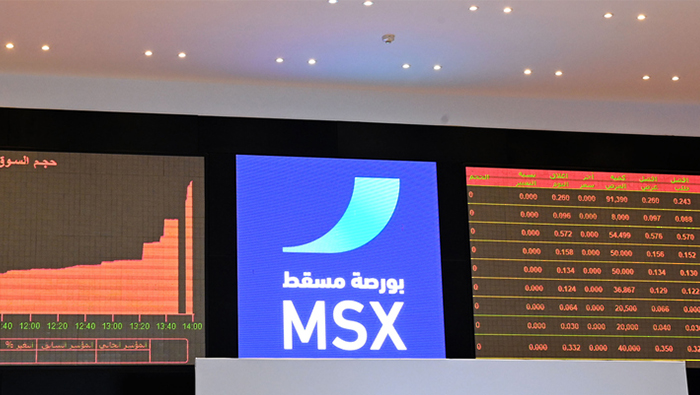The Muscat Stock Exchange (MSX) experienced a rise in market value at the end of the week’s trading, reaching OMR24.35 billion. This increase was driven by gains of more than OMR108.5 million, with the prices of 30 securities rising during the week. The services and industry sectors saw the most significant increases, while banks and investment companies had a more volatile performance. The industry sector index rose by 65 points, the services sector index increased by 24 points, the Sharia index saw a gain of 4 points, and the financial sector index fell by 83 points. The main index of the stock exchange saw a slight increase of one point and closed at 4,688 points.
Exceptional trading activity was witnessed during the week, with the trading value rising to OMR110.5 million, a significant increase compared to the previous week. Abraj Energy Services stock saw a surge in trading worth OMR100.5 million, accounting for 90.8% of the total trading value. OQ Gas Networks, Bank Sohar International, Oman Cables Industry Company, and Bank Muscat also saw notable trading activity. Despite the interest in many stocks during the week, the number of executed deals declined to 3,804, a decrease of 12.9% from the previous week.
During the week, some notable companies experienced significant increases in stock price, including Barka Water and Power Company, Shell Oman Marketing Company, Dhofar Beverages and Foodstuff Company, Muscat Gases Company, and Muscat City Desalination Company. On the other hand, Oman Real Estate Fund units, Oman United Insurance shares, Oman Fisheries shares, Al Maha Petroleum Products Marketing shares, and Oman International Development and Investment Company (Ominvest) shares saw declines in their stock prices.
On July 1, the Muscat Stock Exchange implemented a new sample for the main index, sectoral indices, and total return indices. This change followed the completion of the annual study of the indices. The main index sample now includes 30 public joint-stock companies, with 11 companies from the financial sector, 13 from the services sector, and 6 from the industrial sector. Five companies were removed from the main index sample, and five new companies were added. The sectoral indices now include 45 companies distributed equally across the financial, industrial, and services sectors, with 15 companies in each sector. The indices will fluctuate based on the performance of the stocks included in the sample.










